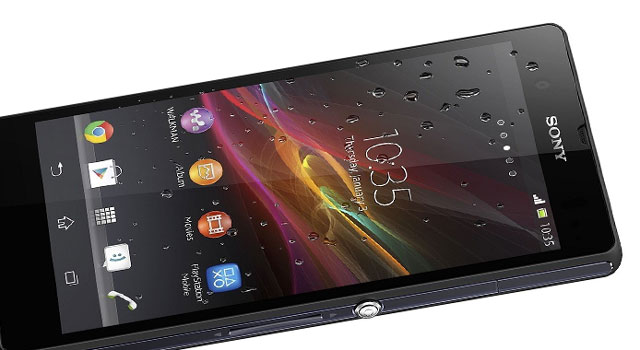
Since it bought out Ericsson’s stake in its Sony Ericsson mobile phone joint venture, Sony has been confined largely to playing catch-up in the smartphone market. Its devices have been good, but they’ve lacked the sort of cutting-edge innovation and aggressive marketing that have made Samsung Electronics the leader in the Android phone market.
With the new Xperia Z, Sony is hoping to change this. Subject to plenty of fanfare at the Consumer Electronics Show (CES) in Las Vegas last week, the Xperia Z sports a 5-inch, full-HD display — setting the pace for what’s likely to follow from other manufacturers this year.
Moreover, it’s the first device in years where Sony is leading the pack — albeit probably briefly — rather than trying to keep up. Samsung, HTC, Motorola and even China’s Huawei and ZTE are all expected to release handsets with specifications equivalent to those of the Xperia Z in coming months but, by being first out of the gates, Sony regains some of its former stature as an innovator.
TechCentral had the opportunity to handle the Xperia Z at a media briefing on Friday and found it to be every bit the high-end device Sony is touting it as. The 1080p display is vivid and crisp, the quad-core processor makes it incredibly snappy. It’s likely to go on sale in South Africa in April or May.
The handset is powered by Android 4.1 and, in a move that is unusual for a premium handset, promises dust, water and impact resistance of the sort usually reserved for special, ruggedised devices.
Sony has the right device. The question is, will consumers warm to it in a year that Samsung is expected to unveil the Galaxy S4 and HTC the follow-up to last year’s highly regarded One X.
Steven Ambrose, MD of consulting firm Strategy Worx, who was at CES in Las Vegas when Sony unveiled the Xperia Z, says the company still has tremendous brand equity and he is upbeat about the phone’s potential. It’s the first device from the manufacturer that is “truly competitive in build quality, specifications and functionality”, he says. “If someone likes the brand and wants a top-end device, this is in the same league as anything from Sony’s rivals.”
The handset’s performance in the South African market will largely be determined by promotion. “Sony needs to do massive promotion and get the networks on board,” Ambrose says. “But the networks will only get on board if it sells, which is a bit of a no-win situation.”
Sony is in a similar position to its rival, Taiwan’s HTC, says Ambrose. “They both have great products, but the local networks aren’t promoting them and people aren’t clamouring to get hold of them.”
New high-end BlackBerrys, based on the BlackBerry 10 operating system, could also present a challenge given how popular the brand remains in South Africa.
Ambrose says even Windows Phone devices like the Nokia Lumia range could cut into Sony’s potential sales as, like Sony, Nokia has excellent brand recognition and its devices are appealing to those willing to try something outside the norm.
Although the Xperia Z is unlikely to unseat Samsung as the reigning champion of the South African Android market any time soon, Ambrose says it does suggest that Sony may be regaining the elusive “cool factor” and the device repositions the company as “more edgy, innovative, and fresher than it’s been in a long while”.
“For the first time, there’s a lot of parity at the high-end of the market. There was a time when the iPhone 4S was considered the best phone on the market, but now it’s difficult to choose between the iPhone 5, the Galaxy S3, the HTC One X and the Lumia 920, which are all excellent devices. Now consumers can base their decision on personal preference or brand loyalty.”
That’s good news for Sony, he adds. — (c) 2013 NewsCentral Media




